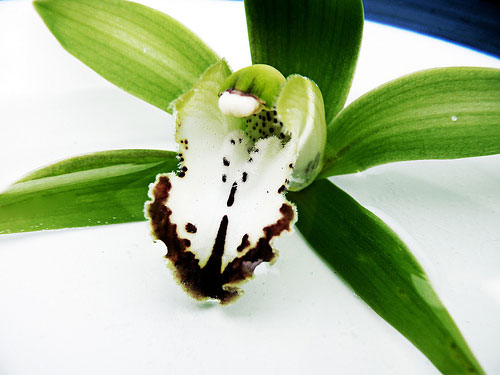Cymbidium Orchid
Cymbidium orchids, also known as Boat Orchids, are very showy! They have sprays with 1-2 dozen large, colorful flowers. Some of these are fragrant orchids. Numerous colors are available; there are very nice reds, pinks, greens, and yellows. (Other colors are available too; those are just the ones that stand out to me.) They originate in parts of Asia, including China, Japan, India, the Phillipines, and other countries; they range fairly widely, and have been cultivated for a long time. There is evidence that they were grown in China thousands of years ago. Many of the larger-flowered species grow at high altitudes in nature, particularly in the foothills of the Himalayas. These sympodial orchids have dense pseudobulbs, with narrow leaves produced above; the foliage can be quite attractive, and some plants have variegated leaves.
Cym. grandiflorum, a very nice green Cymbidium orchid.
Image courtesy of Nico Nelson
Distributed under the Creative Commons Attribution 2.0 Generic license.